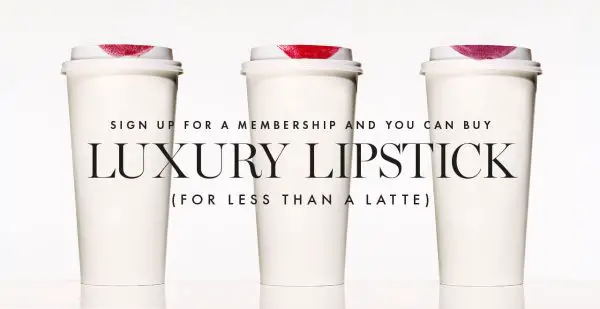Beauty Pie is a subscription make up retail outlet (online) selling beauty products at “factory prices”. In order to access your factory priced products you need to pay £10 a month to be part of the Beauty Pie community.
Beauty Pie is created by Marcia Kilgore (Bliss, Fitflop, Soap & Glory) – an extraordinary entrepreneur and also a gifted marketer. In this instance, she is doing what entrepreneurs do best: creating something different in the marketplace and also taking a calculated risk.
On the face of it, Beauty Pie is rather tempting – who wouldn’t want access to a £20 lipstick for £2.23? But there’s the rub – who priced it at £20 in the first place? That price seems to be based on an averagely expensive lipstick (in truth, mark ups are huge) that incurs costs of counters, fancy packaging, advertising, PR, marketing – we all know the true cost of a lipstick is pennies in its raw form. Actually, it’s fractions of pennies! You can buy lipsticks from £1 to £35 (more probably) with varying levels of ingredient quality but they’ll all colour your lips.
The model of paying £10 a month to access factory price cosmetics relies heavily on brand recognition – there are so many budget brands (absolutely killing it on the high street by the way, and putting the luxury brands in fear of their life) that people know and love that they can actually swatch in Superdrug or Boots, or at least, have scoot around the blogosphere for swatches or opinions. If Beauty Pie was offering me a Marc Jacobs lipstick for £2.23 and a £10 membership, I’d be in! But, it isn’t. And, while things need to be kept simple for the cost to stay low, Beauty Pie doesn’t look covetable. It looks functional. The coveting is such a big part of being a beauty lover. One of the big learnings of the year, digitally, is that we’re over things looking the ‘same’.
In a Facebook post, a BBB reader commented that she’d joined, paid her £10 membership, ordered a lipstick, liner, gloss, highlighter and a bronzer but after postage and packing had been added in her order came to over £30, so she cancelled it. The lure of a £2.23 lipstick is huge, and that’s where the main focus of marketing and PR lies for this brand, but costs soon add up, especially with a ‘handling’ fee of 35p per item (before shipping costs). It’s not as simple as the core price.
The site is transparent in saying products are made across a variety of countries; Korea, the UK, Italy, France, Germany and the USA, but that in itself can lead to quality control issues if not all products are made in the same way by the same people. It doesn’t drill down on where actual product, as opposed to components are made – in theory, all the actual make up could be made in one place, while components such as casings and packaging are made in others. But, we don’t know. A scoot round the internet tells you that the products have similar ingredients to much more highly priced brands – that’s a tale in itself because while the ingredients might be the same or very similar, it doesn’t tell you the quality story. The fact that there is no swatching or small size sampling is a big issue for a world of beauty fans who love being tactile and experimental with their products before they commit.
I don’t doubt the quality and functionality of any of Beauty Pie products (I have some products here and they’re perfectly decent without being groundbreaking), but I do question its desirability and the ‘comparison’ prices based on averages, and whether, given that we have such a huge wealth of budget brands to choose from already, being part of any club where you are ‘allowed’ to buy a certain amount of products but have to pay £10 a month to do so, can have any longevity. The whole point of affordable beauty is that you can be as fickle as you like across brands – £10 a month for access is a commitment that budget beauty lovers haven’t been asked or expected to make before.
Certainly, if you look at press coverage, you’d think Beauty Pie was the next Chanel – but nobody is asking many questions on behalf of the consumer about this sales model. Marcia posted a call out for ‘retail partners’ a few weeks ago so I suspect that we are only seeing the tip of the iceberg at the moment. Although it’s being hailed as a game-changer, something about this feels old already – if Beauty Pie had happened in the 80’s when budget products weren’t in such ready supply, it might be different. What might change things significantly is if the Beauty Pie brand is able to replicate sell out shades from other brands – that’s dependent upon fast turn-around of course, because beauty fads can die two moments after they began.
There will have been endless research on whether the Beauty Pie model can work – nobody begins a brand like this without thorough and comprehensive market research and it must have been positive for the brand to now exist. It’s a tough market, Beauty Pie enters from a standing start – I’m genuinely curious to see how it pans out especially as it’s founded by someone who standardly does not fail at business.




Leave a Reply